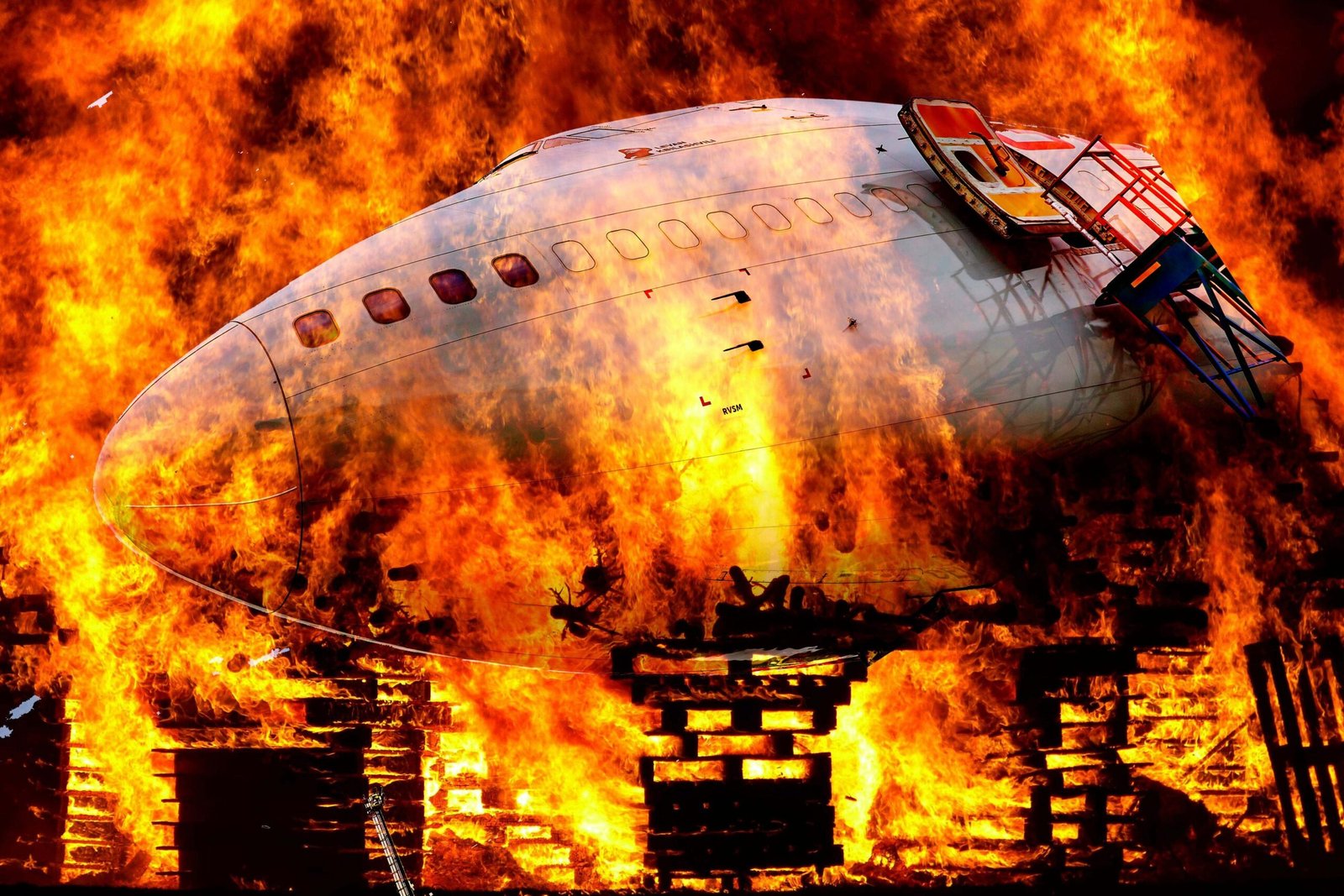
The Importance of Aeroplane Accident Research
Aeroplane accident research plays a vital role in enhancing safety within the aviation industry. By meticulously examining the causes and circumstances surrounding various accidents, researchers and industry professionals can gain invaluable insights that inform future safety measures and regulations. Such knowledge not only aids in understanding human and technical factors that contribute to accidents but also facilitates the development of effective training programs for pilots and crew members. The proactive identification of potential risk factors is essential for preventing future incidents.
Historically, several significant aeroplane accidents have served as turning points in aviation safety protocols. For instance, the crash of a major airline in the past prompted a thorough review of cockpit resource management, leading to enhanced communication and decision-making processes among flight crews. Similarly, other catastrophic events have resulted in stricter regulations surrounding aircraft maintenance and inspection protocols. These historical references underscore the critical connection between accident investigation and the establishment of robust safety standards within the industry.
The ever-evolving nature of technology in aviation necessitates ongoing aeroplane accident research. As advanced systems and materials are integrated into modern aircraft, the potential for new types of accidents or safety concerns emerges. Continuous research efforts equipped with the latest data play a crucial role in identifying these new risks and contributing to the establishment of protocols that minimize their occurrence. Furthermore, collaboration among aviation stakeholders, including regulatory bodies, manufacturers, and researchers, remains essential to fostering an environment of shared learning and ongoing improvement. Engaging in comprehensive aeroplane accident research not only enhances safety measures but also strengthens public confidence in air travel, which is essential for the continued growth of the aviation sector.
Common Causes and Factors of Aeroplane Accidents
Aeroplane accidents can be attributed to a multitude of factors, which can be broadly categorized into three primary categories: human error, technical failures, and environmental influences. Understanding these causes is crucial in enhancing aviation safety and refining preventive measures.
Human error stands as one of the most significant contributors to aeroplane accidents. This encompasses mistakes made by pilots, air traffic controllers, and other personnel involved in flight operations. For instance, the infamous Air France Flight 447 accident in 2009 demonstrated how a lack of proper communication and situational awareness among the cockpit crew led to a catastrophic outcome. In many cases, insufficient training or fatigue may exacerbate human error, highlighting the importance of robust training programs and regulatory oversight to mitigate these risks.
Technical failures also play a critical role in aeroplane accidents. Mechanical malfunctions, equipment failures, and flaws in aircraft design have been responsible for several high-profile incidents. The de Havilland Comet crashes in the 1950s serve as an early example of how structural failures can compromise safety. Advances in engineering and maintenance practices have significantly reduced these occurrences, yet the possibility of undetected issues remains, necessitating ongoing vigilance through rigorous inspection and maintenance protocols.
Lastly, environmental factors can greatly influence the safety of flight operations. Weather conditions, such as turbulence, thunderstorms, and icing, can create hazardous conditions for pilots. The crash of Eastern Air Lines Flight 401 in 1972 illustrates how adverse weather combined with human error can lead to disaster. Therefore, increasing awareness of how to navigate through challenging environmental factors is essential for both pilots and aviation authorities.
By systematically analyzing these causes and learning from previous incidents, the aviation industry can work towards minimizing the risk of aeroplane accidents and fostering continuous improvements in safety measures.
Research Methodologies in Aeroplane Accident Analysis
Analyzing aeroplane accidents is a complex process that employs a variety of research methodologies to ensure a comprehensive understanding of the incidents. Predominantly, these methodologies can be categorized into qualitative and quantitative approaches, each contributing uniquely to the investigation process. Quantitative methods often involve statistical analysis, allowing researchers to identify patterns and correlations among various variables associated with aeroplane accidents. By utilizing large datasets, researchers can derive significant insights into accident causes, frequency, and the effectiveness of preventive measures.
On the other hand, qualitative research approaches focus on the narrative aspects of accidents, delving into the human factors, organizational failures, and environmental influences that may have contributed to an incident. These methodologies often involve interviews, surveys, and on-site observations, providing a holistic view of the circumstances surrounding an aeroplane accident. By integrating both qualitative and quantitative data, researchers are better equipped to develop well-rounded conclusions and recommendations.
Data collection methods play a critical role in the success of these research methodologies. The use of advanced technology, including flight data recorders (FDR) and cockpit voice recorders (CVR), allows investigators to capture vital information leading up to an accident. Furthermore, simulation software can recreate accident scenarios, offering valuable insights into potential causes and outcomes. However, the integration of these technologies does not come without challenges. Researchers often face difficulties in the form of incomplete data, damaged recording devices, and the intricate nature of accident sites, which can hinder thorough analysis.
Even with advancements in technology and methodology, the dynamic nature of accidents necessitates continuous adaptation and improvement in research strategies. By refining their techniques and updating their analyses, researchers can enhance safety measures and minimize the risk of future aeroplane accidents. The balance between qualitative and quantitative aspects remains paramount in yielding effective outcomes, ensuring a structured approach to accident analysis and prevention.
Future Directions in Aeroplane Accident Prevention Research
A significant shift in aeroplane accident prevention research is on the horizon, primarily driven by advancements in technology. Emerging tools, particularly artificial intelligence (AI) and machine learning, are poised to revolutionize the aviation industry by providing innovative solutions for predicting and preventing accidents. These technologies can analyze vast amounts of data from various sources, enabling a more comprehensive understanding of potential risks and safety concerns.
By leveraging AI, researchers can develop predictive models that assess the likelihood of specific scenarios leading to accidents. These models analyze historical data, real-time operational inputs, and external factors, thereby identifying patterns that human analysts might overlook. Such advancements can lead to proactive measures, ensuring that preventive protocols are in place before an incident occurs rather than merely responding post-event.
Moreover, integrating machine learning with existing safety systems can enhance protocols already in place. For instance, by continually refining algorithms based on new data, these technologies offer dynamic safety adjustments that help maintain optimal operational conditions. This continuous learning process fosters a culture of safety that is responsive to evolving challenges in the aviation sector.
Collaboration among stakeholders is also crucial for advancing aeroplane accident prevention. Researchers, airlines, government regulators, and technology developers must pool their resources and expertise to identify critical areas for further exploration. Areas such as human factors, cockpit resource management, and maintenance scheduling could benefit significantly from specialized studies that utilize AI-driven insights.
In conclusion, the future of aeroplane accident prevention hinges upon the integration of advanced technologies like artificial intelligence and machine learning. By fostering collaboration and focusing on data-driven research, the aviation industry can enhance safety protocols, ultimately leading to a more resilient and secure traveling environment for all passengers.

